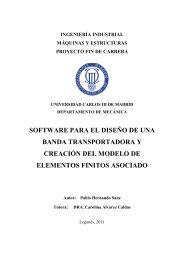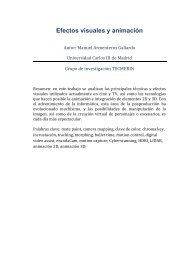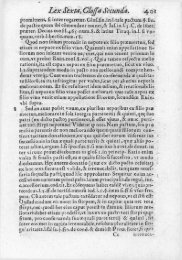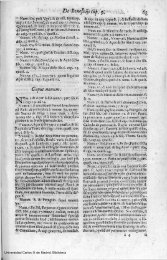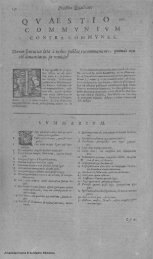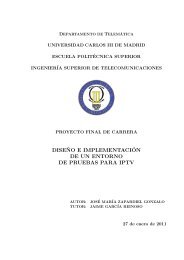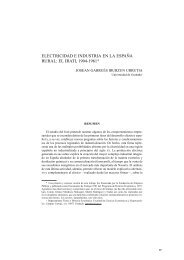Land tenure inequality, harvests, and rural conflict ... - e-Archivo
Land tenure inequality, harvests, and rural conflict ... - e-Archivo
Land tenure inequality, harvests, and rural conflict ... - e-Archivo
You also want an ePaper? Increase the reach of your titles
YUMPU automatically turns print PDFs into web optimized ePapers that Google loves.
expansion of agricultural l<strong>and</strong> from 1890 to 1935, the st<strong>and</strong>ard deviation of the output<br />
of wheat <strong>and</strong> olives was 23 per cent <strong>and</strong> 50 per cent of the mean respectively (AE,<br />
various years). Although wheat was less volatile than olives, wheat <strong>harvests</strong> were<br />
more volatile than olive <strong>harvests</strong> in the provinces studied here in the early 1930s,<br />
which allows for a straightforward comparison of <strong>conflict</strong> levels between towns<br />
specialising in cereals <strong>and</strong> those specialising in olives or other products. Compared<br />
with mean provincial wheat output for years in 1920-1933, wheat output in Seville<br />
was above mean in 1931, more than 2 st<strong>and</strong>ard deviations above mean in 1932 <strong>and</strong><br />
1.15 st<strong>and</strong>ard deviations below mean in 1933. Taking into account wheat production<br />
in the provinces of Córdoba or Jaén, both 1931 <strong>and</strong> 1933 were bad years <strong>and</strong> 1932 a<br />
very good one (own calculations from AE, various years). Although disaggregated<br />
information on the 1934 wheat harvest is not available, the 1934 harvest was<br />
considered as good or better than the 1932 harvest.<br />
The volatility of wheat <strong>harvests</strong> in the early 1930s allows me to test if poor<br />
<strong>harvests</strong> caused greater levels of <strong>conflict</strong>. In particular, interacted May <strong>and</strong> June<br />
dummies with 1931 <strong>and</strong> 1933 dummies should have significantly different<br />
coefficients, meaning June 1931 <strong>and</strong> June 1933 should have been more <strong>conflict</strong>-prone<br />
than June 1932 <strong>and</strong> June 1934. In principle, this coefficient should also be higher in<br />
the case of bad years in towns especializing in cereal production compared to towns<br />
specialized in other crops in the same bad years. Therefore, I would expect intereacted<br />
May <strong>and</strong> June dummies with year 1931 <strong>and</strong> year 1933 dummies <strong>and</strong> a dummy taking<br />
value 1 if the town was specialized in cereals to display positive coefficients<br />
statistically different from 0. Dummy variables capturing the type of local agricultural<br />
(irrigated, irrigated-dry farming, cereals, cereals <strong>and</strong> olives, olives) are interacted with<br />
22




